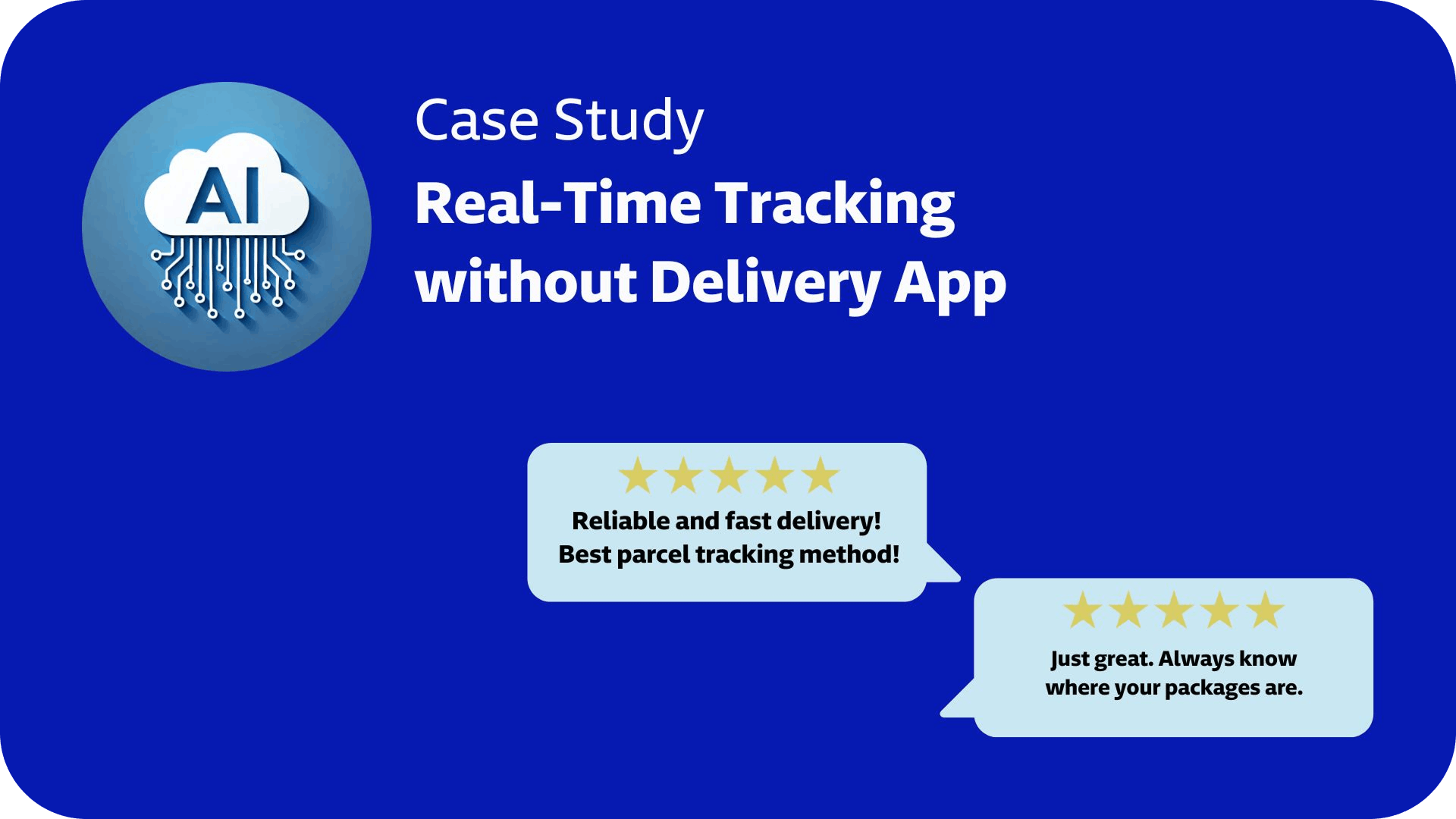GLS Hungary and Bettermile collaborated to introduce a predictive real-time tracking system that doesn’t require GPS data. This solution enabled over 90% of customers to receive live delivery updates, shrinking the average delivery window from three hours to just 80 minutes. The easy implementation preserved GLS Hungary’s operational routines, yet customer satisfaction soared to 80% and brought a record 4.75-star rating, showing how data-driven innovation can improve last-mile delivery without drastic changes.
Consumers no longer settle for "out for delivery." They expect to track packages in real-time, just like a food order or ride-share. This demand for transparency has made real-time last mile tracking essential for a satisfying delivery experience.
But how does real-time package tracking work, and what impact does it have on delivery operations?
This guide explores what last mile tracking means, what it takes to implement a modern tracking system, and how to build the business case to prove its value.
What is last mile tracking?
Real-time last mile tracking is a strategic capability for delivery service providers that redefines the delivery experience and drives transformation on the final mile. Transparency, accurate ETAs, and proactive communication turn uncertainty into confidence, making delivery a positive and predictable experience for customers.
But its true value goes beyond customer satisfaction. When fully integrated, last mile tracking becomes the connective tissue that links customer experience, driver performance, and operational efficiency. It enables delivery networks to harmonize productivity with the human experience — creating the foundation for scalable, data-driven excellence in last mile logistics.
The benefits of real-time package tracking for carriers
How does final mile tracking work?
The most common approach relies on capturing the driver's live GPS location from a specific device or application. This data provides a clear "dot on a map" for the customer. However, this method can be either static—where the system simply shows the driver's location relative to a pre-planned route and a fixed ETA—or dynamic, if it's connected to a system that re-optimizes the route in real-time. The main challenge here is operational: it requires all drivers to use that specific GPS-enabled application.
This more flexible, algorithm-driven approach works differently. Rather than simply tracking GPS coordinates, this method uses machine learning to analyse live operational data. Simulation algorithms allow the last-mile tracker to intelligently narrow time windows for the recipient as the driver progresses along their route. This system is inherently dynamic, recalculating the estimated time of arrival after each event to ensure the predictions remain aligned with actual operations. The advantage of this algorithmic tracking is that it can be deployed without the need for any new application on the driver's end, thereby limiting the operational implications of integrating a last-mile tracking solution.
Key features of an advanced package tracking solution
Live Map Tracking Give customers the transparent delivery experience they love, with live vehicle updates right on their local map.
Customer Notifications Keep customers informed and reduce "where-is-my-order" inquiries with proactive delivery alerts.
Dynamic ETA Predictions Turn vague, all-day delivery windows into precise, smartly narrowing ETAs that are accurate down to the minute.
Delivery Ratings & Feedback Close the loop by capturing real-time customer feedback to measure satisfaction rates on route, depot and company level.
Rerouting Options Empower customers with true last-minute flexibility to redirect parcels on-the-fly and ensure first-attempt success.
Branded Tracking Frontend Satisfy shippers by extending their brand experience from checkout to the doorstep with a fully customizable, seamless tracking page that strengthens customer retention.
Data Visibility Turn tracking data into actionable insights that help you reduce customer inquiries, improve route efficiency, and prove success.
How to integrate real-time tracking into your delivery system?
Integrating a last mile tracking software should be flexible and adapt to your existing systems. The most straightforward method is by sharing your route data through the driver app. For a more seamless experience, carriers can use an API to connect tracking data directly to their TMS or WMS. At the customer-facing level, the tracking experience can be embedded as a widget into an existing app, integrated via API into a custom-built site, or deployed instantly using a customizable URL.
Reliable Live Tracking
Our customer service teams experienced a rapid decrease in customer contact volume after we implemented Bettermile's real-time tracking software. Bettermile has positively impacted the overarching triangle of GLS, our recipients, and our customers.



